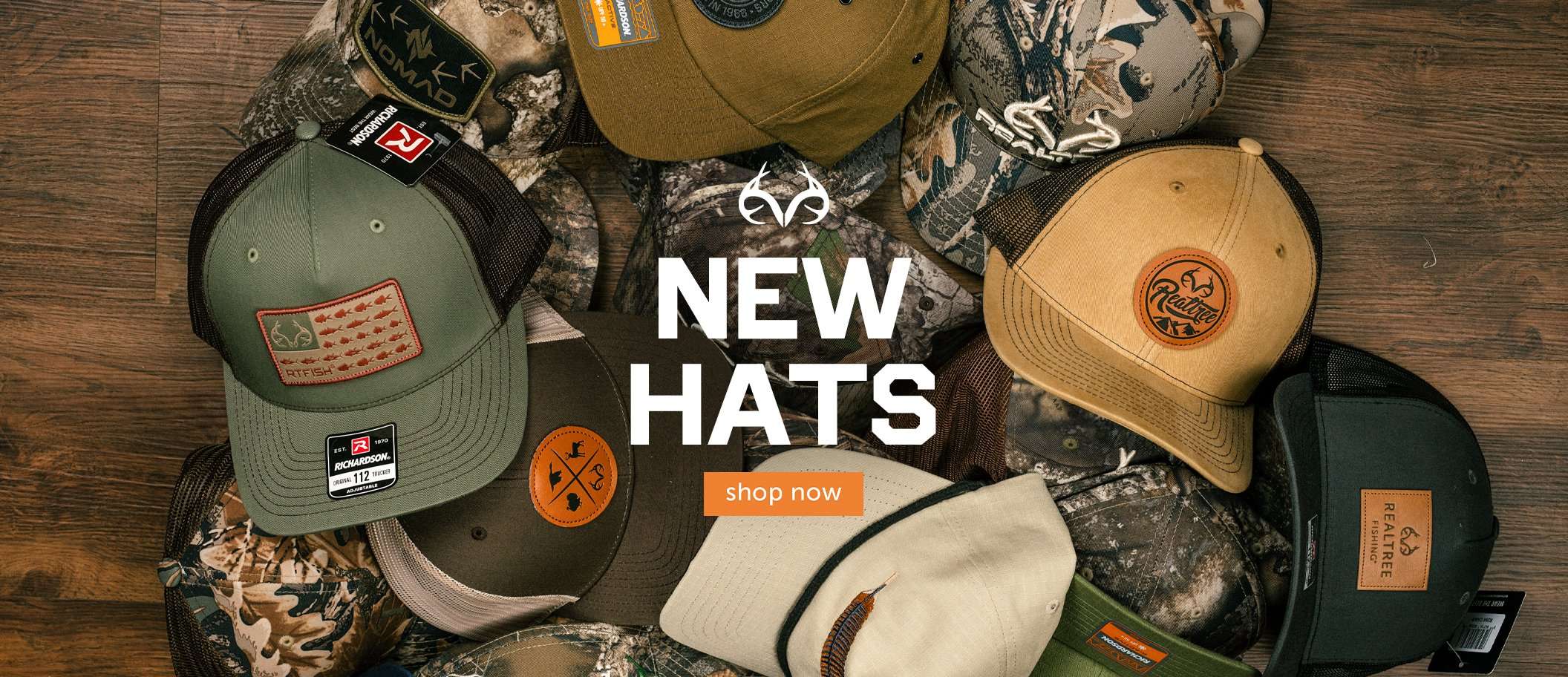You’re much likelier to die from a treestand fall than from a venomous snakebite. Here’s the reality of snakebites in the U.S. and an expert’s guide on what to do—and not to do—if you’re bitten by a copperhead, cottonmouth, rattlesnake, or coral snake
There are dangers inherent to being outdoors, from treestand falls to firearm accidents to bear attacks. But in parts of the country, many hunters and anglers fear venomous snakebites more than anything else. It’s a fear that, while not unfounded, is frequently inflated.
According to the Centers for Disease Control, about 8,000 people are bitten by snakes each year in the United States. Of those, only about five die from the bite. Compare that with an average 4,000 drowning deaths per year or the 400 to 500 hunters who die from treestand falls, and you’ll see the risks of meeting your maker from a snakebite are slim. Even lightning strikes kill about four times more people each year than snakes.
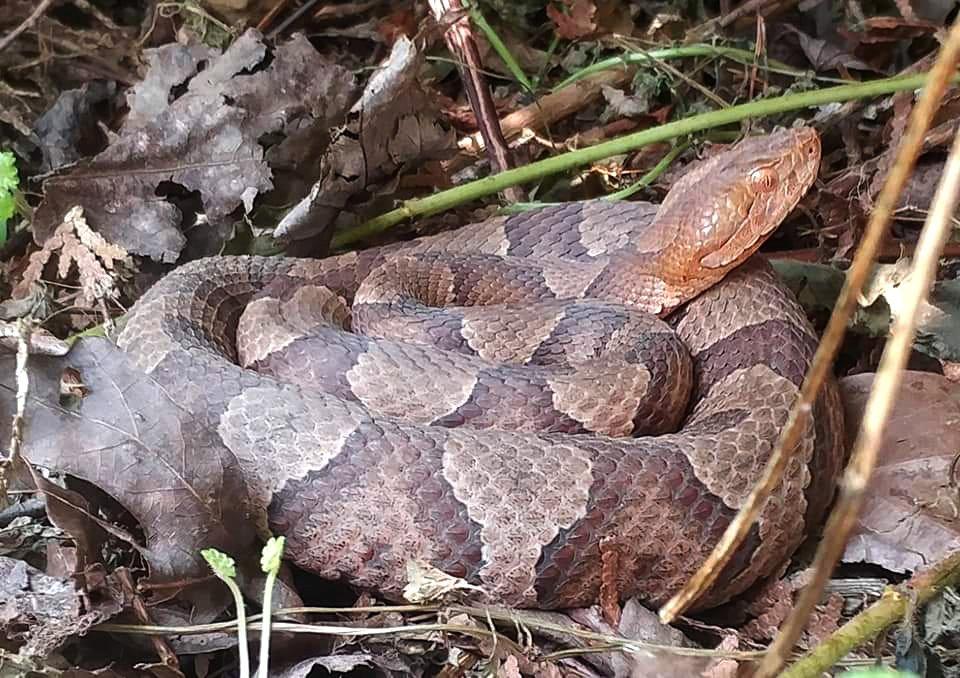
Copperheads and other venomous snake species only cause an average of five fatalities per year in the U.S. Image by J Raines
Sure, you’re likelier to be in close proximity to a venomous snake while hunting or fishing than while walking across a parking lot. But two studies on venomous snakes, one with cottonmouths and one with rattlesnakes, should provide some comfort. These studies have shown that snakes aren’t as likely to bite, even when stepped on or touched, as is often thought. In fact, the majority of the sampled snakes did their best to escape when interacted with.
The first study, done by J. Whitfield Gibbons and Michael E. Dorcas and titled "Defensive Behavior of Cottonmouths” pretty much put to rest the cottonmouth’s reputation for being hyper aggressive. The test method consisted of placing an artificial hand onto 45 different wild cottonmouths and exerting pressure onto their bodies. Of those 45 snakes, 23 tried to escape. Three quarters of the snakes used defensive measures and displays other than biting. Only 13 of the snakes eventually bit the artificial hand.
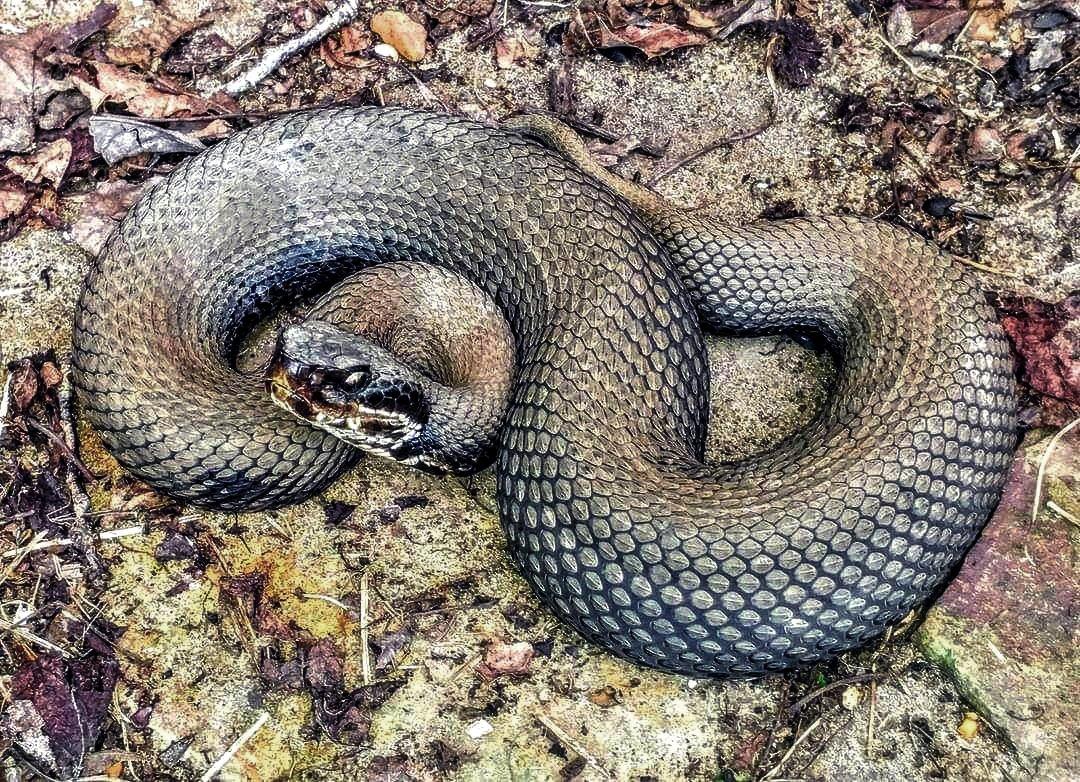
Even cottonmouths, often rumored to be the most aggressive venomous snake, were more likely to attempt to escape than strike. Image by J Raines
A similar study, conducted by Cale Morris of the Phoenix Herpetological Sanctuary, sought to find out what rattlesnakes would do when stepped on. Morris constructed an artificial leg and boot and used it to “step on” wild rattlesnakes, much like what would happen if someone accidentally stepped on the snake on a trail.
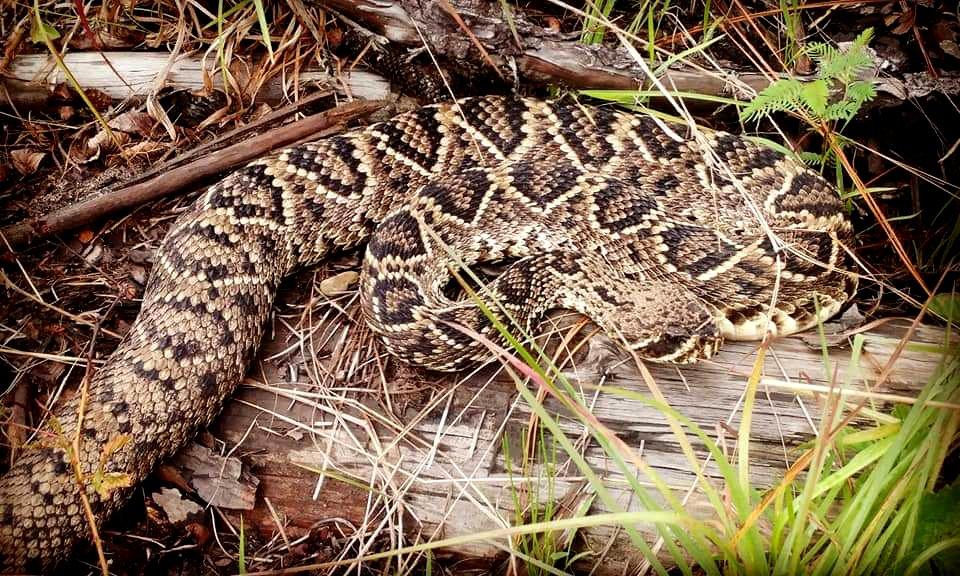
Of the 175 studies rattlesnakes, only 6 struck at an artificial leg placed directly on them. Image by J Raines
The results weren’t what many expected. Most of the stepped-on snakes tried to escape, froze, or just undulated in place. And of those 175 snakes, only six struck the leg and just three of them went into a coil position. Morris also added that the old wives’ tale that rattlesnakes always rattle before striking is false. “They're on the menu for everything. They’re fat, they have a lot of meat on them. They don't rattle before striking, since it would give their position away.” The snakes rattle, not as a warning that they are about to strike, but as an advance warning to let large animals know they are in the trail so that they don’t get stepped on. He added that there are plenty of other wives’ tales about venomous snakes that just aren’t true. For example, have you ever heard that the venom of a juvenile snake is more potent than that of an adult snake? You can put that to rest, too. Morris says the potency of the venom is about the same in a juvenile snake as in an adult, but the juvenile produces only a fraction of the venom.
A FIRST-HAND COPPERHEAD STORY
Studies that show most snakes would rather escape than strike are well and good, but bites do still happen on occasion. A good friend and hunting buddy, Barry Hicks, was his checking cameras in central Kentucky last fall when he accidentally stepped on a copperhead, which struck his boot. He described it this way: “I had the camera hooked to an ammo box with an external 12 V battery at the base of the tree. I didn’t really pay attention and I walked straight up to the tree, placing my foot against the battery box as I opened the camera. I felt something hitting or thumping at my foot, and that’s when I looked down and saw the copperhead all wrapped around my foot. I was standing on it. I kicked the snake off pretty quickly and it got away from me and crawled under a big log. I didn’t feel anything and I didn’t think that it had even bitten my boot. Or maybe I just didn’t want to think about the possibility. I started walking out across the creek and felt water in my boot. That’s when I looked closely and found a pair of puncture holes where the snake had bitten it.”
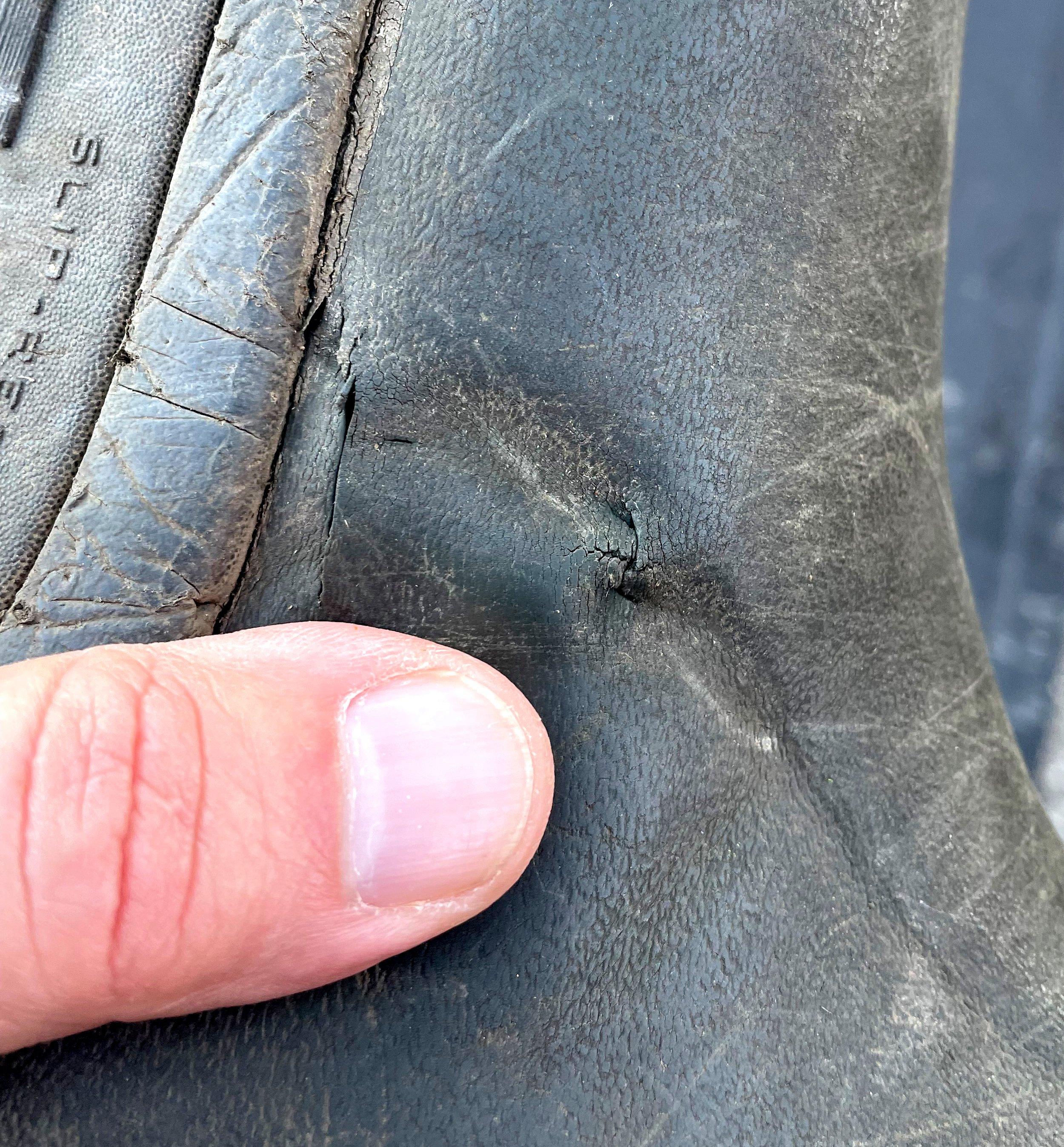
After stepping on a copperhead while checking a trail camera, Barry Hicks discovered puncture wounds in his boot. Image by B Hicks
Hicks was lucky, but he had taken one of the most effective and easiest measures available to prevent bites when he donned a pair of boots before heading afield. He’d worn proper clothing for being in the woods. While snake boots are most effective at preventing bites, any high boot made from leather, neoprene, or rubber will help. Besides boots, denim has been found to be surprisingly effective in preventing dangerous bites. A California study used saline-filled latex gloves exposed to Pacific rattlesnakes to study strikes. The researchers found that gloves covered in denim absorbed about two-thirds less venom from the rattlesnake bites than those that were uncovered.
Don’t Miss: The Best Days to Deer Hunt in 2024
There are other measures to take, mostly obvious ones, to prevent snakebites. First and foremost, don’t handle venomous snakes. One study done across several U.S. hospitals found that the majority of snakebites happened when people (disproportionately young males, up to 87% of bite victims in one Arizona study) were attempting to handle the snake. The study found that between 50% and 65% of venomous snakebites are illegitimate, meaning the person put himself harm’s way by touching or harassing the snake. Because of this, most illegitimate bites occurred on the hands and arms, while the bulk of legitimate (accidental) bites occurred on lower legs and feet.
Don’t put your hands and feet in places you can’t see. Always look before placing your hands onto trees or between rock ledges. Always look on the offside of logs or rocks before stepping over to make sure the coast is clear.
WHAT TO DO IF YOU ARE BITTEN BY A VENOMOUS SNAKE
Dr. Spencer Greene is a staff member at National Snakebite Support, a group of medical professionals who advise on treatment for snakebites for both humans and animals. NSS is available to educate and advise individuals and medical professionals who might not have experience in treating bites. Here is Dr. Greene’s list for what to do — and not to do — if you are bitten by a snake.
DO
Seek medical attention. Of the handful of U.S. deaths by snakebite each year, few or none of them were medically treated.
Get away from the snake. If you or someone else can safely and quickly get a picture of the snake, great. But don’t waste time or risk a second bite.
Remove constrictive clothing and jewelry.
Position the affected extremity appropriately. For copperhead and cottonmouth bites, in which local tissue damage is highly likely but the likelihood of systemic toxicity is low, place the affected extremity above heart level. In rattlesnake bites, it is reasonable to keep the affected extremity at heart level. Once in the hospital, the affected extremity should always be elevated.
Get to an appropriate hospital. If you are having life-threatening signs and symptoms such as airway issues or low blood pressure, get to the nearest hospital for stabilization. They can then transfer you if needed to an expert. Otherwise, proceed directly to a hospital with a snakebite expert. If you spend a lot of time in areas with snakes, you should investigate your regional hospitals to locate one or more specialists.
DO NOT
Cut the bite and suck the venom. All this does is make a wound worse and potentially introduces bacteria into the wound.
Apply a tourniquet. There is no benefit in cutting off an extremity’s arterial blood
supply unless the patient is bleeding to death. For that matter, don’t apply any sort of constriction band or pressure immobilization for pit viper bites. (Pressure immobilization is reasonable for coral snake bites.)Use electrical shock treatment. It does not “neutralize the venom” or whatever
nonsense advocates claim. But it is a good way to cause permanent injury.Apply heat or prolonged icepacks. Ice packs for a few minutes at a time, say 5 minutes on and 10 minutes off, are OK but prolong cryotherapy is bad for the tissue.
Use one of the commercially-available suctions devices. They don’t remove
venom.Bring the snake to the hospital. We don’t need to see the snake to provide appropriate treatment.
SNAKEBITE TREATMENT FOR DOGS
Pets, especially hunting dogs, are at a greater risk of being snake bitten than humans. Many dogs equate snakes with something that needs to be attacked, often leaving them bitten on the face or neck area. Treatment for most animals follows closely with that for humans.
The most common signs of envenomation by a pit viper include puncture wounds, swelling, bruising, bleeding, and pain. Always remove collars or anything that might restrict breathing with swelling. If you believe your dog was bitten, get him to the vet. But also research vets ahead of time to be sure you’re using one that follows the proper protocols for a snakebite. Steroids, Benadryl, and antibiotics are not indicated in the acute phases of a snakebite, but Dr. Greene says many longtime vets still administer them. The only way to treat the symptoms and prevent further tissue damage from a venomous snakebite is with administration of antivenom.
You should give venomous snakes plenty of respect and a wide berth, but don’t let fear of a snakebite keep you indoors. You’re in far more danger on the vehicle ride to and from your hunting spot than you ever will be from the snakes that live there. Dress appropriately, pay attention, and, if you do run across a venomous snake, admire it from a distance and don’t try to handle it. Follow those rules and you will be perfectly safe, no matter what part of the country you are in.
Don’t Miss: FIND A BIG BUCK IN JULY WITH THESE TRAIL CAM TIPS





